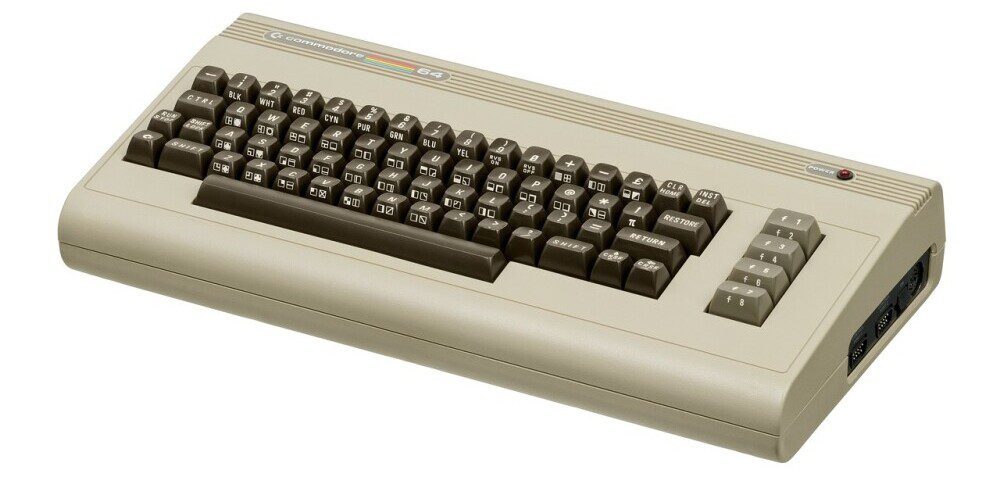
In the early 1980s, as home computing began to take root in households around the world, a singular 8-bit machine emerged to capture the public’s imagination and become a cultural icon. The Commodore 64, launched by Commodore International in 1982, was more than just another home computer—it was a revolution in personal computing, entertainment, and education. This blog post delves into the fascinating history of the Commodore 64, exploring its development, market success, cultural impact, and lasting legacy.
The Genesis of a Game-Changer
To understand the significance of the Commodore 64, we must first explore its origins. Commodore International, founded by Jack Tramiel in 1954, was a company with a history of producing calculators and early computers. By the early 1980s, Commodore was already a player in the burgeoning home computer market with its VIC-20, but the VIC-20’s capabilities were quickly being outpaced by newer models from competitors like Atari and Sinclair.
The development of the Commodore 64 was driven by a desire to create a computer that combined power, affordability, and versatility. The design team, led by Commodore engineer Robert Russell, aimed to produce a machine that could offer both high performance and an extensive library of software at a price point accessible to the average consumer.
Technical Specifications and Innovations
The Commodore 64 was powered by the MOS Technology 6510 microprocessor, running at 1.02 MHz. This might seem modest by today’s standards, but it was quite impressive for its time. The computer came equipped with 64 kilobytes of RAM, a substantial amount considering the typical memory of its competitors.
One of the most notable features of the C64 was its graphics and sound capabilities. The VIC-II (Video Interface Chip) graphics chip allowed for 16 colours and a resolution of 320×200 pixels. This enabled the C64 to produce visually appealing graphics for its time, with smooth scrolling and sprite-based graphics that made games and applications more engaging.
Equally groundbreaking was the SID (Sound Interface Device) chip, which provided superior sound quality compared to other home computers of the era. The SID chip allowed for three voices of sound with advanced waveform capabilities, making it a favourite among musicians and game developers. The C64’s distinctive chiptunes and sound effects became iconic, contributing significantly to the machine’s popularity.
Affordable Innovation
When the Commodore 64 was released, it was priced at $595 US dollars. This was a strategic move to undercut competitors and make the computer accessible to a broader audience. The affordability of the C64 was a crucial factor in its success, as it allowed families and individuals to invest in a home computer without breaking the bank.
The C64’s pricing strategy, combined with its robust feature set, helped it quickly gain traction in the market. By 1983, just a year after its release, the C64 had become the best-selling home computer in the world. Its success was further buoyed by Commodore’s decision to sell the C64 directly to consumers through mail order and retail outlets, bypassing traditional distribution channels that might have inflated prices.
A Software Bonanza
One of the key factors behind the C64’s success was its extensive library of software. The C64 boasted over 10,000 commercial games, educational programs, and productivity applications. This impressive software library was a major draw for users, as it provided a wide range of options for entertainment and productivity.
The gaming industry, in particular, saw a significant boost thanks to the C64. Developers took advantage of the machine’s capabilities to create a plethora of memorable and influential games. Titles such as The Bard’s Tale, Elite, and Maniac Mansion became instant classics, showcasing the C64’s ability to deliver engaging gameplay and innovative design. The C64’s games were often characterized by their vibrant graphics and catchy soundtracks, thanks in part to the capabilities of the VIC-II and SID chips.
Educational software also played a vital role in the C64’s success. Programs like Reader Rabbit and Oregon Trail introduced a new way for students to learn and engage with subjects outside of traditional classroom settings. The C64’s ease of use and accessibility made it an excellent tool for both home and school environments.
The Rise of the Demoscene
Beyond games and productivity, the Commodore 64 became a significant platform for the demoscene—a subculture dedicated to creating visually and technically impressive demonstrations of coding skills. The demoscene was characterized by its emphasis on pushing the boundaries of what was possible with the hardware.
The C64’s ability to produce complex visual effects and sound sequences inspired a generation of programmers to experiment and innovate. Groups like Commodore 64 Demoscene and Triad produced stunning demos that showcased the full potential of the machine. These demos were not only a testament to the creativity and technical prowess of their creators but also helped establish the C64 as a platform for artistic expression.
Cultural Impact and Legacy
The Commodore 64’s impact extended far beyond its technical achievements and market success. It became a symbol of the digital age, influencing pop culture and leaving a lasting legacy in various fields.
Pop Culture Influence: The C64’s distinctive design and chime, known as the “Commodore 64 beep,” became iconic representations of 1980s technology. Its influence extended into music, with numerous bands and artists using the C64’s sound capabilities to create electronic and chiptune music. The machine’s impact on popular culture is still evident today, with references to the C64 appearing in various forms of media and entertainment.
Educational and Career Impact: For many individuals who grew up with the C64, it was their first introduction to computing and programming. The simplicity and accessibility of the C64’s BASIC programming language made it an excellent tool for learning the fundamentals of coding. Many of today’s computer scientists, engineers, and developers credit their early experiences with the C64 as a significant factor in their career choices and achievements.
Enduring Popularity: Even decades after its release, the Commodore 64 continues to capture the imagination of retro computing enthusiasts. Emulators and modern hardware clones allow new generations to experience the C64’s software and games. The machine’s enduring popularity is a testament to its impact and the affection with which it is remembered by those who grew up during its heyday.
Challenges and Decline
Despite its success, the Commodore 64 faced challenges as technology evolved. By the late 1980s, personal computing was advancing rapidly, and newer, more powerful machines began to enter the market. The rise of 16-bit computers like the Atari ST and the Commodore Amiga posed significant competition, offering enhanced capabilities and performance.
Commodore struggled to adapt to the rapidly changing market. The company’s inability to innovate quickly enough and internal management issues contributed to its decline. By the early 1990s, the Commodore 64 was being overshadowed by more advanced systems, and Commodore International eventually ceased production of the C64.
Conclusion
The Commodore 64 remains one of the most influential and beloved home computers in history. Its innovative design, affordability, and extensive software library made it a game-changer in the personal computing industry. The C64’s impact on gaming, education, and the demoscene is still felt today, and its legacy endures through retro computing enthusiasts and modern emulators like VICE.
As we look back on the Commodore 64’s storied history, we are reminded of a time when computing was both a new frontier and a source of boundless creativity. The C64’s story is not just about a machine but about a cultural phenomenon that shaped the digital age and continues to inspire a sense of nostalgia and wonder.
In celebrating the Commodore 64, we honour not just a remarkable piece of technology but a symbol of innovation and possibility. Its influence on the world of computing and beyond ensures that the Commodore 64 will always be remembered as a pioneering force in the history of personal technology.
A Commodore 64 History Video
A video from one of my Favourite Youtubers “The 8-Bit Guy”

